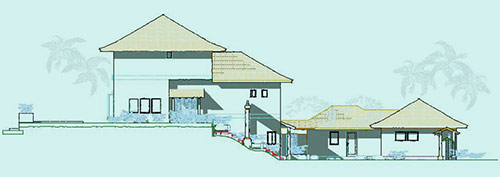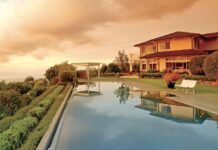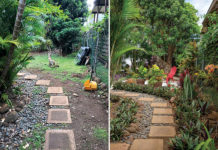MNKO: Whoa! How many psychology classes do you guys take?
Peter: Neuroscience for architecture is one of my favorite things.
MNKO: What’s “neuroscience for architecture”?
Peter: It’s how the lighting in a room affects your mood. It’s the textiles. . . .
Frank: Colors, how mirrors make a room look bigger. . . .
MNKO: Is it fair to say that a Maui architect would know things an architect from somewhere else doesn’t?
Frank: Well, there is a big difference between designing for a temperate climate and designing for the tropics. Our relationship to the environment is different; we live outside more, we know what passive cooling is, and that you don’t make the front door open into the trade winds. It’s not just drawing experience, or building experience. It’s our experience of a lifestyle. A mainland architect has to learn those issues — usually at the client’s expense.
Jim: Here’s an example. The client says, “I just bought this property in Hāna, and it’s right on the ocean, and it’s got this gorgeous view, so I want slide-away walls.” And I say, “You’ll never open those doors. I’ll put them on the other side of the house, and give you lots of glass for the ocean view, but [if we install slide-away walls], every time you crack the door this far, you’re going to clear the table, because the wind comes onshore there, hits the cliff, and salt spray covers everything.”
Even an O‘ahu architect can’t do that well here, because they don’t know how to design at 4,000 feet.







Good morning, Rita
I sent an email to Lehia Apana as well, but wanted to post here that I think you did an excellent job with this article, and the information you provided is professionally helpful for me as well.